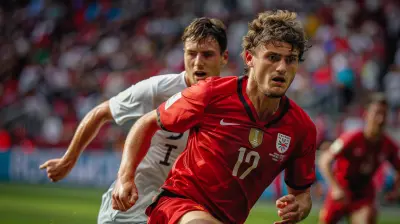The Importance of Communication in Executing Team Strategy
3 August 2025
Ever watched a sports team fall apart—not because of skill, but because no one seemed to be on the same page? Yeah, it’s painful to watch. Even the most talented athletes can fail if they aren’t communicating effectively. That’s why strong, clear communication isn't just important in sports—it's essential. It's the glue that holds team strategy together.
In this article, we’ll dig into why communication is the secret sauce behind executing team strategies, how it impacts performance, and how teams can level up their communication game.
Why Strategy Alone Isn’t Enough
Think of a team strategy like a GPS. It plots the route. But without communication, it's like trying to follow GPS directions with the volume turned off. You might eventually figure it out, but it'll be messy, slow, and full of wrong turns.A brilliant strategy doesn't mean a thing if the team can't talk about it, understand it, and adapt it in real-time. Communication is what makes the playbook come alive. It transforms ideas into action.
So, how exactly does that work?
The Role of Communication in Team Sports
Let’s break it down. Communication is the bridge between strategy and execution. It affects:- Understanding roles
- Reacting to game-time changes
- Building trust
- Boosting morale
- Preventing mistakes
Let’s take a deeper look at each.
1. Clarifying Roles and Responsibilities
Imagine a basketball team where two players think they’re both playing point guard. Chaos, right?That's what happens when players aren’t clear on their roles because no one took the time—or had the courage—to speak up. Pre-game communication ensures everyone knows their position, their job, and how they fit into the bigger picture.
Great teams don’t assume. They talk things out, clarify, and double-check. That’s not micro-managing—it’s smart playing.
2. Adapting in Real-Time
Things move fast in sports. Plays break down. Opponents surprise you. Weather turns. What separates good teams from great ones? The ability to adapt on the fly.And guess what? You can’t adapt if you’re not talking.
Whether it’s switching formations in soccer, calling an audible in football, or shouting defensive instructions on the fly in hockey—communication is what keeps the wheels turning when the game gets chaotic.
Game-time communication can be verbal, like calling out a screen. Or non-verbal, like a subtle hand signal or eye contact. Either way, it’s key.
3. Fostering Trust and Chemistry
Want trust? Start talking.Players who communicate build stronger relationships. They start to read each other better. They understand the tone of a teammate's voice, or what they really mean by a quick glance. That chemistry shows on the field.
Think of legendary duos in sports—like Tom Brady and Rob Gronkowski, or Messi and Neymar. Their success wasn’t just from talent. It was years of communication, trust, and knowing exactly what the other was thinking.
Without communication, you’re just a group of strangers wearing the same uniform.
4. Boosting Confidence and Morale
Ever miss a shot or mess up a play and hear a teammate say, “Shake it off, we’ve got this”?Instant mood booster.
Communication has emotional power. Encouraging words during a tough game can lift a player’s head and shift the team’s energy. That kind of support can make the difference between bouncing back or falling apart.
And it's not just about cheering each other on. Giving constructive, respectful feedback helps players grow. The key is saying the right thing at the right time, and in the right tone.
5. Eliminating Costly Mistakes
Miscommunication leads to one thing—mistakes.In sports, an ill-timed pass, missed coverage, or failed switch can turn the tide of a game. Most of these blunders? Yep, you guessed it—communication breakdowns.
Clear, consistent chatter on the field or court reduces these errors. Everyone’s tuned in. Everyone’s aware. That’s how you stay sharp and minimize slip-ups.
Communication Isn’t Just Talking
Here’s the kicker: communication isn’t just about talking more—it’s about talking smarter.It’s about listening. Really listening. It’s about non-verbal cues. Body language. Knowing when to speak and when to stay quiet. It’s more of an art than a science.
There are three types of communication in sports you can’t ignore:
1. Verbal Communication – Calls, commands, pep talks.
2. Non-verbal Communication – Gestures, eye contact, posture.
3. Written Communication – Training schedules, game plans, even team texts and group chats.
Top teams master all three.
Building a Strong Communication Culture
So, how do you actually build a team that talks like champions? You don’t just hope it happens. You create the environment for it.Here’s how:
1. Start with the Coach
A team’s communication culture starts at the top. Coaches who encourage open dialogue, give clear instructions, and listen to players set the tone.No one wants to speak up if they fear getting shut down. But if a coach creates a safe space for questions and feedback, communication flows.
Think of it like a family dinner table. If everyone feels heard, they’re more likely to join the conversation.
2. Make It Part of Practice
Communication drills? Yep, they’re a thing.Simple stuff like shout-outs, calling plays out loud, or practicing non-verbal cues during scrimmages help reinforce good habits. The more players talk during practice, the more natural it becomes during games.
Want to level up? Record practice sessions and review communication moments with the team. It’s like watching game tape, but for your words and reactions.
3. Use Team Meetings Wisely
Team meetings aren’t just for coaches to talk. They’re golden opportunities for open discussion.Use meetings to:
- Clarify strategies
- Share feedback
- Address conflicts
- Celebrate wins
Encourage players to speak up. The more involved they feel, the more committed they become to the team's strategy.
4. Lean Into Tech Tools
These days, communication goes beyond the locker room.Use group chats, Slack channels, or team apps to keep everyone in the loop. Share updates, review plays, or just throw in a funny meme to keep spirits high.
The key? Keep it consistent and positive.
5. Encourage Peer-Led Communication
Leaders don’t always wear the armband.Encourage all players—not just captains—to lead conversations. Peer-to-peer communication builds inclusion and ownership. When players hold each other accountable and lift each other up, the whole team wins.
Real-Life Examples That Prove the Point
Still not convinced communication is that important? Let’s look at some real-world sports moments where communication made all the difference.- The 2014 San Antonio Spurs – Their incredible ball movement and selfless play weren’t just about passing skill. It was communication, trust, and clarity of roles that made them click like clockwork.
- Leicester City’s 2016 Premier League title – A team that was all about heart, hustle, and constant on-field chatter. Their chemistry and communication outshone more “talented” teams.
- USA Women’s Soccer Team – Their unity and constant encouragement on the pitch helped them dominate. You can hear them talking, calling, and cheering every second of the match.
These teams didn’t just have strategy—they had a culture of communication.
Communication Today, Champions Tomorrow
Whether you're in high school sports, playing college ball, or coaching a Sunday league, remember this: the teams that talk, win. It’s that simple.Strategy gives you direction. Communication gives you fuel.
So, next time you step onto the field or court, pay attention to the chatter. Make it positive. Make it purposeful. Because when everyone’s voice matters, the whole team rises.
Final Thoughts
Communication is the most underrated superpower in sports. It’s not flashy. It doesn’t fill stat sheets. But it wins games. When players, coaches, and teams build a culture of communication, they turn average strategies into championship performances.So let’s stop treating it like an afterthought. Let’s embed it into every drill, every huddle, every game plan. Because in the end, teamwork without communication is like trying to win a relay race without passing the baton.
And you know how that ends.
all images in this post were generated using AI tools
Category:
StrategyAuthor:

Fernando Franklin
Discussion
rate this article
1 comments
Seraphis Willis
Good communication in sports: like a referee's whistle—everyone hears it, but not everyone listens!
August 12, 2025 at 10:59 AM

Fernando Franklin
Absolutely! Effective communication, much like a referee's whistle, is crucial for clarity in team strategy, ensuring everyone is on the same page—even if not all choose to listen.


